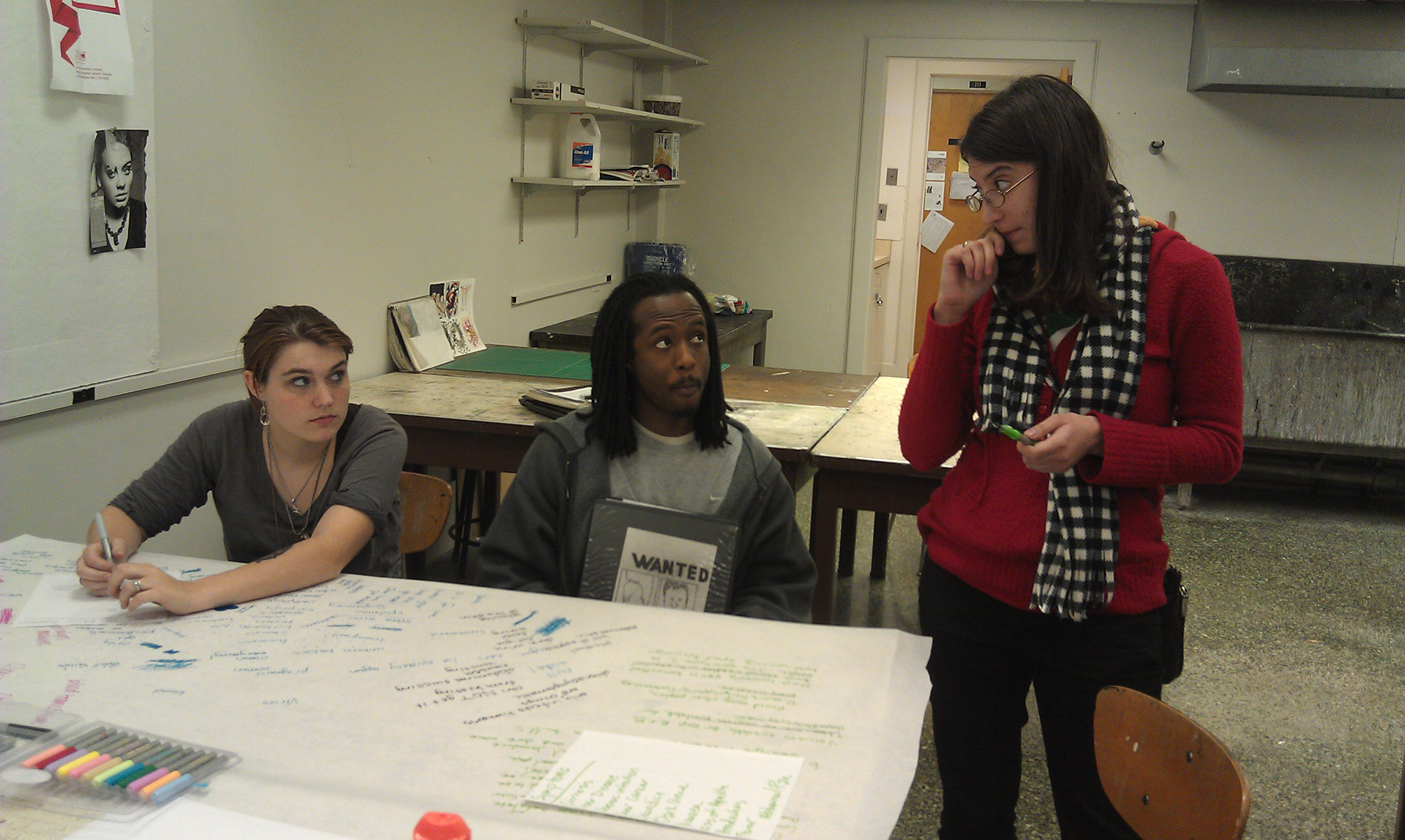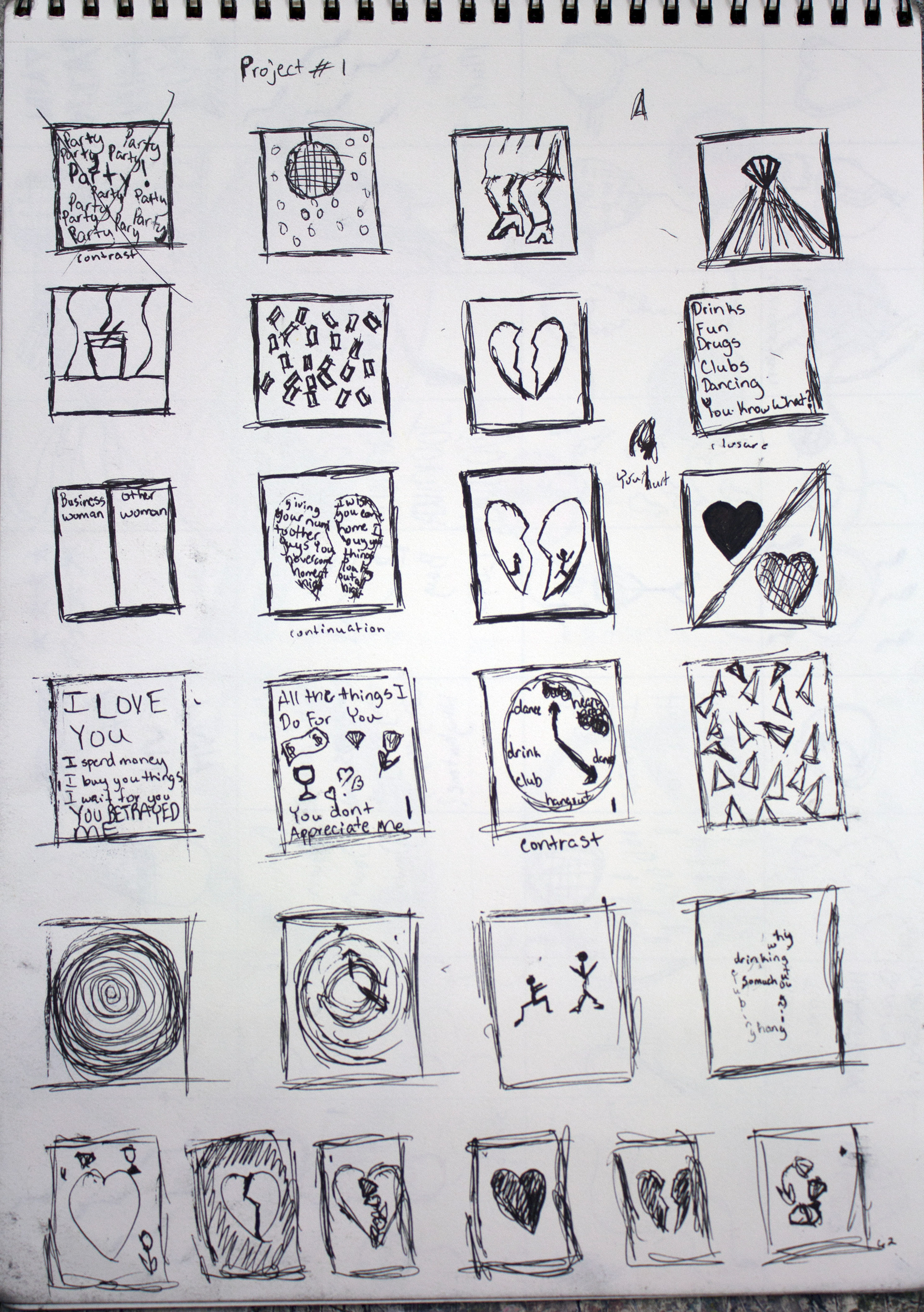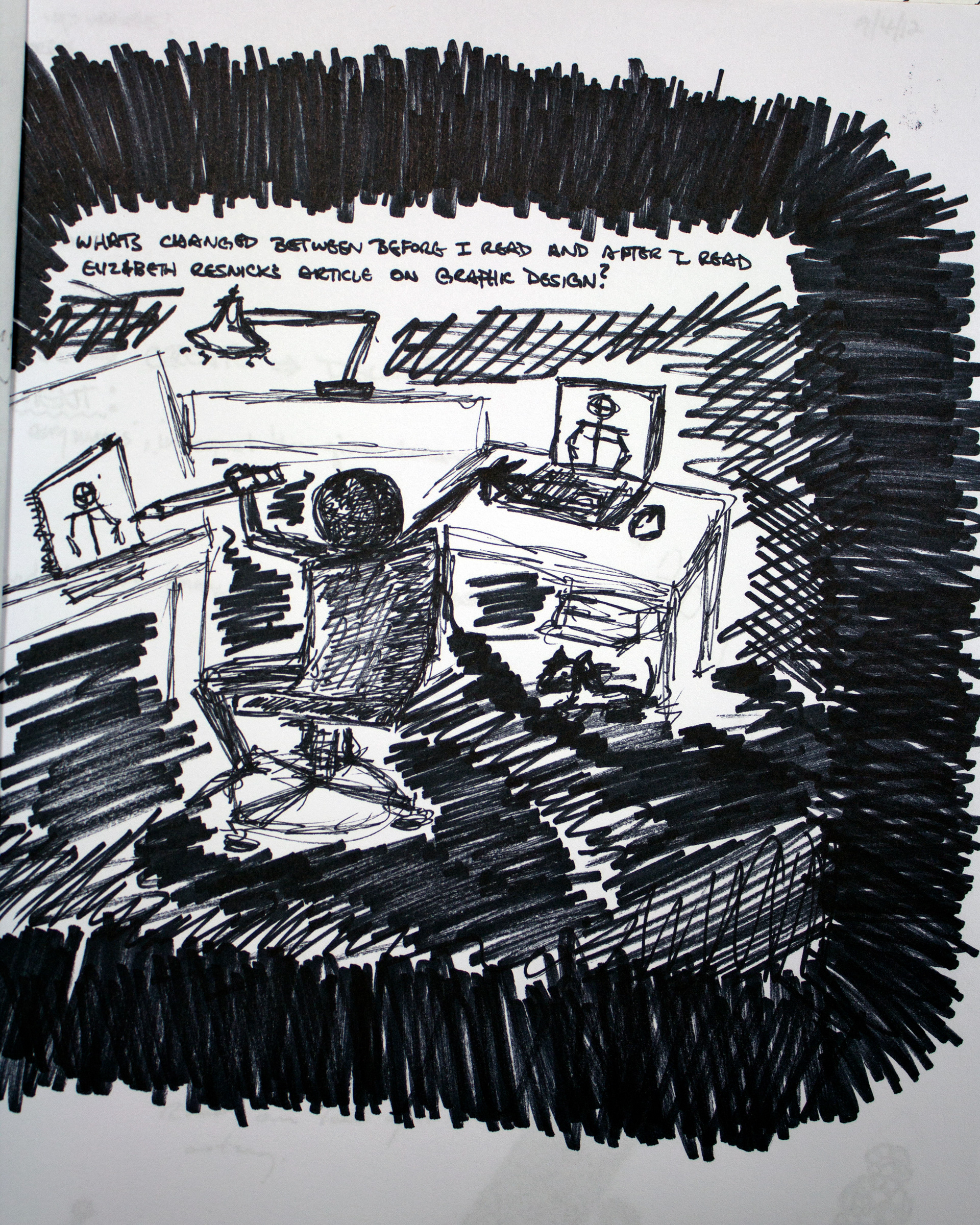To design is to solve problems. Teaching design students a variety of methods in problem solving will best prepare them for future challenges. The Design Investigation Method introduces first-year design students to a number of methods within the area of Design Thinking.
Student responses to the Design Investigation Method were included in the poster I designed for presentation at UCDA Creative Summit.
Introduction panel in MFA thesis exhibition.
Collaborative diagramming and mind mapping
First-semester graphic design students are introduced to ways of design thinking. Collaborative sketching and mind-mapping help students understand the limitations of their knowledge of a topic and define areas of research.




Sketching and journaling
Emphasis on student journaling in a first-semester graphic design course. "What you document in your journal will be more valuable in five years than it is today." Below are student examples.






Research Project for Design Investigation Method
PROJECT BRIEF: THE DESIGN INVESTIGATION METHOD
Project Background
The characteristics of the people who use the services of the Department of Motor Vehicles grow more diverse every year. While these drivers are able to navigate the road, they have trouble navigating the various paperwork and processes of the DMV, not to mention its website and the local offices.
Assignment
Design a set of icons or pictograms that can be used for print, digital or environmental applications. These icons should be applicable to your specified audience.
Method
You will work as a team on the Design Investigation Method to better define the parameters of this project. You will work as an individual to create and deliver the final project.
Deadlines
Team Presentations: Monday, Oct. 14
Present findings from the Design Investigation Method and the approach your team will take to solve this problem. Use photographs, videos, sketches, and/or diagrams to support your case.
Individual Presentations: Wednesday, Oct. 16
Present three sets of roughs in critique based on the approach decided by your team. Be prepared to show/explain your process. Format: TBD.
Final Individual Presentations and Reports: Monday, Oct. 21
Present final project (see details below) in critique.
Final Project Format
Color Comprehensive
11x14 image area professionally mounted on board (foam or illustration)
Verbal presentation
Written project report (contents TBA)
Evaluative criteria
Preparation and Process
Adequate research using the Design Investigation Method, ideation, and refinement
Professionalism, conduct, and participation
Mature delivery and cogent presentation during critiques
Excellent craftsmanship
Active involvement in group projects and critiques
Novel problem solving applied
Using the DIM
The Design Investigation Method has resulted in students who are more engaged in formulating the parameters of the design brief/assignment. As they work through the Method they demonstrate spontaneity and generate novel ideas. Reports of students’ research experiences spawn animated classroom conversations and a sense of one-upmanship. Students often relate stories of sharing the project and their research discoveries with their parents or friends. These experiences have also inspired innovative applications of the Method and the inclusion of ideas from people that might not have been considered otherwise.
Selection of students' rough comps:


